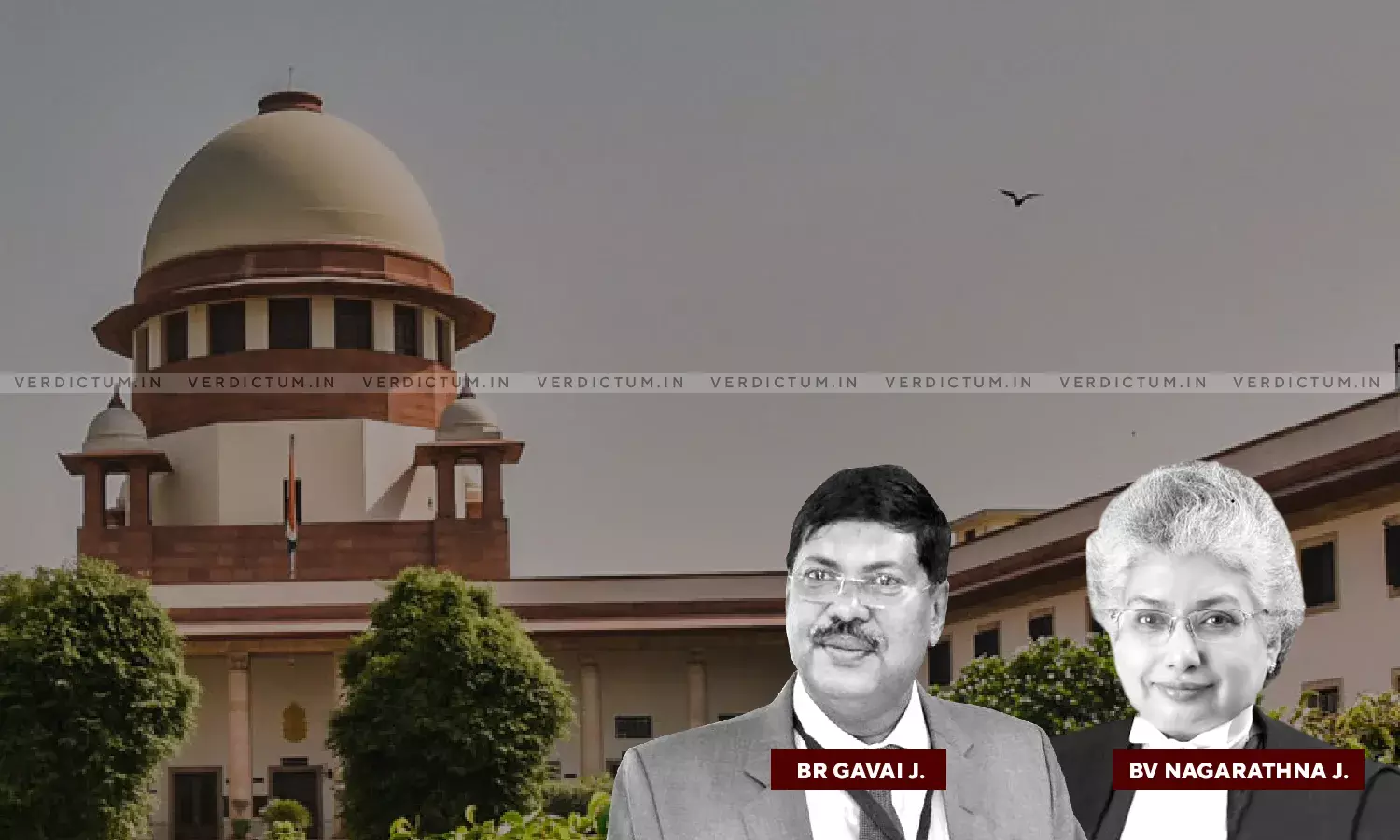SC Stresses Upon Balance Between Sustainable Development & Environmental Protection While Permitting Urban Development

The Supreme Court while stressing upon the need for a proper balance between sustainable development and environmental protection has appealed to the legislature, the executive, and policymakers to make necessary provisions for carrying out environmental impact assessment studies before permitting urban development.
The Bench of Justice B.R. Gavai and Justice B.V. Nagarathna while allowing the appeal filed by the Resident’s Welfare Association held, “… we observe that it is high time that the Legislature, the Executive and the Policy Makers at the Centre as well as at the State levels take note of the damage to the environment on account of haphazard developments and take a call to take necessary measures to ensure that the development does not damage the environment. It is necessary that a proper balance is struck between sustainable development and environmental protection. We therefore appeal to the Legislature, the Executive and the Policy Makers at the Centre as well as at the State levels to make necessary provisions for carrying out Environmental Impact Assessment studies before permitting urban development.”
The Bench made the observations while prohibiting fragmentation or apartmentalization of residential units in phase-I of Chandigarh, saying it will injure the "Lungs" of the city as conceptualised by French architect Le Corbusier who had designed it.
The Court quoted India’s first Prime Minister Jawaharlal Nehru who while laying down the founding principles of a new city for the Capital of the State of Punjab said, “Let this be a new town, symbolic of freedom of India unfettered by the traditions of the past…an expressions of the nation’s faith in the future”.
Senior Advocate P.S. Patwalia appeared on behalf of the appellants while ASG K.M. Natraj and Senior Advocate Kapil Sibal appeared for the respondents.
Facts –
In the year 2001, the Administrator, UT of Chandigarh, in exercise of powers conferred under Sections 5 and 22 of the 1952 Act, framed the Chandigarh Apartment Rules, 2001 (hereinafter referred to as “the 2001 Rules”). By virtue of the 2001 Rules, even in case of single residential units, it was permissible to sub¬divide it into more than one apartment. The citizens of UT of Chandigarh vehemently opposed the construction of apartments, which according to them, had the effect of destroying the character of the city.
Since, in spite of its specific stand, Chandigarh Administration was not taking any steps to prevent fragmentation/apartmentalisation of single dwelling units, an appeal was filed before the Apex Court.
The Supreme Court noted, “Chandigarh has been envisaged as an administrative city with hierarchical distribution of population being such, that the population density in the northern sectors is low, which increases towards the southern sectors. Chandigarh has been planned as a low¬rise city, and has been so developed that even after sixty years of its inception, it retains the original concept to a large extent. This is how the concept of this “beautiful city” was born.”
It was also noted by the Court that phase-I was designed for low-rise plotted development for a total population of 1,50,000 and phase-II sectors were to have a much higher density as compared to phase-I sectors.
The Court further observed, “In the year 2009, a Committee for Chandigarh Master Plan, 2031 (for short, “CMP¬2031”) came to be constituted. In the year 2010, a Committee of Experts (for short, “Expert Committee”) came to be constituted to look at both the original concept of the city of Chandigarh as well as the maintenance of important heritage buildings in the UT of Chandigarh.”
The Court said that a perusal of the CMP¬2031 itself would reveal that the Expert Committee observes that Chandigarh’s inscription on UNESCO’s World Heritage list would bring many benefits as the city would join a select list of other modern cities/urban areas currently inscribed on it.
The Court further said, “In our view, in this background, providing something which would adversely affect the heritage status of the Le Corbusier Zone, without the approval of the Heritage Committee, would not be permissible.”
It was further observed by the Court that in spite of various changes, Lucio Costa’s Pilot Project (Plano Piloto) still remains preserved.
The Court asserted, “We find that similar steps need to be taken by the Chandigarh Administration as well as the Government of India for protecting the heritage status of Le Corbusier’s Chandigarh.”
Accordingly, the Court allowed the appeal.
Cause Title- Resident’s Welfare Association and Another v. The Union Territory of Chandigarh and Others
Click here to read/download the Judgment


